Getting Started with Collaborative Robots: Finishing

Posted on Mar 30, 2016 7:00 AM. 5 min read time
You are looking at your first robot integration for your finishing application. You have heard about collaborative robots or cobots, but you don't know where to start? You’ve come to the right place. We have put together this blog post series to help you figure out which robot will match your specific application. The first post on machine tending can be found here, our second post on assembly applications is here, and the third post on product testing is here. For our final blog post, we'll talk about finishing applications.
With manufacturing processes becoming more and more automated, operations such as finishing are among those that are considered dangerous for human workers. With the introduction of robots that can work close to people without exposing them to hazards, it is now less risky and a lot faster to use a robot for your finishing application.
What is finishing?
Depending on your manufacturing process, finishing can use different methods. Some of the most popular applications are sanding, deburring and polishing. As your job is basically to finish a part, you probably have already mastered this method. But you still need to figure out how to do it with a robot! Here's where we can help.
What about finishing with a collaborative robot?
A collaborative robot or cobot for short is a general term used to describe power and force limited robots, robots that can be used without safety guarding or that have incorporated other safety features. This means the cobot can be put beside a machine or a person and set to perform a certain task without needing to be fenced off from its surrounding environment.
That being said, to introduce a cobot in a finishing application and program it to deburr or sand parts is not as simple as it sounds. You will need to choose a robot and tools that can accomplish the job and that can reach a level of performance comparable to a human worker. Here are some key factors to consider if you are looking at a finishing operation using a collaborative robot.
Robot Specs
- Payload : The payload is the total weight the robot can carry. You need to weigh your end effector, the heaviest raw part or tool you want to carry, plus you need to account for any force that is needed in the finishing operation. This will determine your robot payload
Tip 1: Remember with power tools or other kinds of tools, you must consider their relatively high mass. The robot needs to include this in its payload.
Tip 2: If you are applying force on a part, you need to include this in the maximum rated payload as well. - Ease of programming: Finishing usually requires irregular paths that imply curves, acceleration, speed control and other complex programming methods. You may want to start with a simple application and build your experience on this one before going into a process that requires precision force and/or precision paths.
Gripper Specs
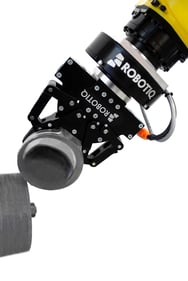
- Force Feedback: Finishing requires force feedback. Using a force torque sensor will allow you to have consistent force and pressure applied on the product along a given path. This means you can limit the force at a given point and/or set a force threshold that should not be breached on a given cartesian path..
Tip 1: Make sure the force torque sensor is not interfered with by external signal noise.
Tip 2: There are 2 ways to have force feedback: by placing the part on a fix force torque sensor or by monitoring the force applied by the robot directly at the robot wrist.
Required Workspace
- Safety: The robot will work alongside humans. Some people will be aware of the danger this presents, others won't. Make sure to perform a risk assessment before building your automation project. Once you're ready to go live, make sure everyone is trained on safety rules around the robot and the risks involved with using a robot. Collaborative robots can increase the safety of your applications, but there may still be risks for your workers.
Tip 1: U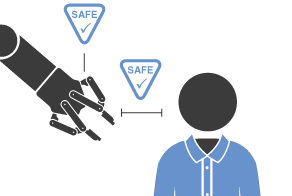 se ISO the standard to guide your risk assessment and don't forget to consult local regulations on this subject. To learn more, download this eBook on risk assessments for collaborative robots.
se ISO the standard to guide your risk assessment and don't forget to consult local regulations on this subject. To learn more, download this eBook on risk assessments for collaborative robots.
Tip 2: Remember, even if the robot itself is safe, if the tool or the part it carries is dangerous, then the robot cell itself may have risks for your workers. - Machine Interface: Make sure to interface your robot with the machine you will be using: Conveyor belt, power tool, etc.
Tip 1: This seems simple, but this is probably the most underappreciated part of the process. Make sure to reserve time and budget for this one.
There you have it, the basics of robot, gripper and workplace specifications for using a cobot in a finishing application. If you need more information on how to shop for a collaborative robot or what their key features might be, we have put together a complete eBook on this subject.

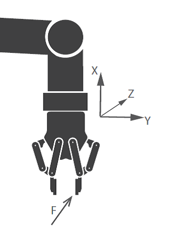
 se ISO the standard to guide your risk assessment and don't forget to consult local regulations on this subject. To learn more, download this
se ISO the standard to guide your risk assessment and don't forget to consult local regulations on this subject. To learn more, download this 
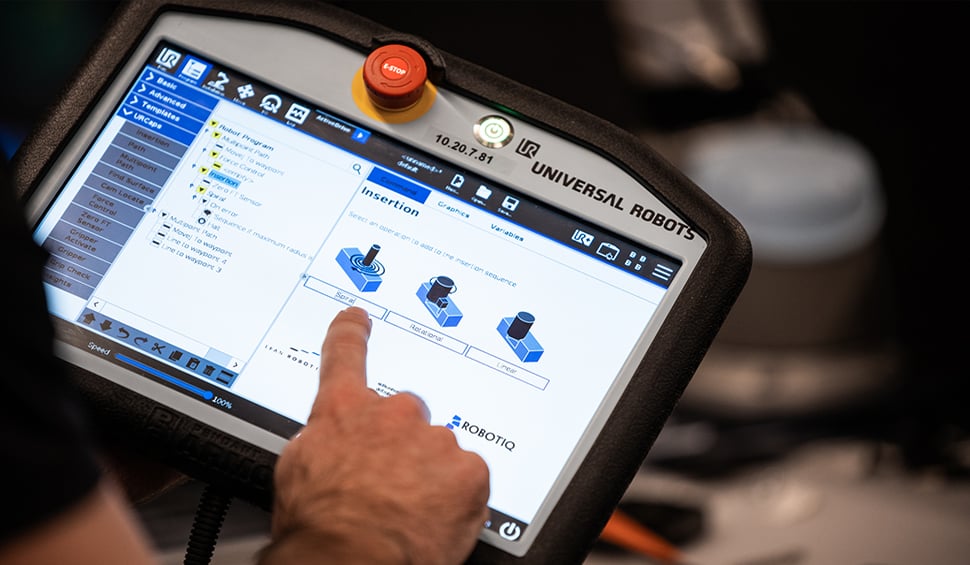

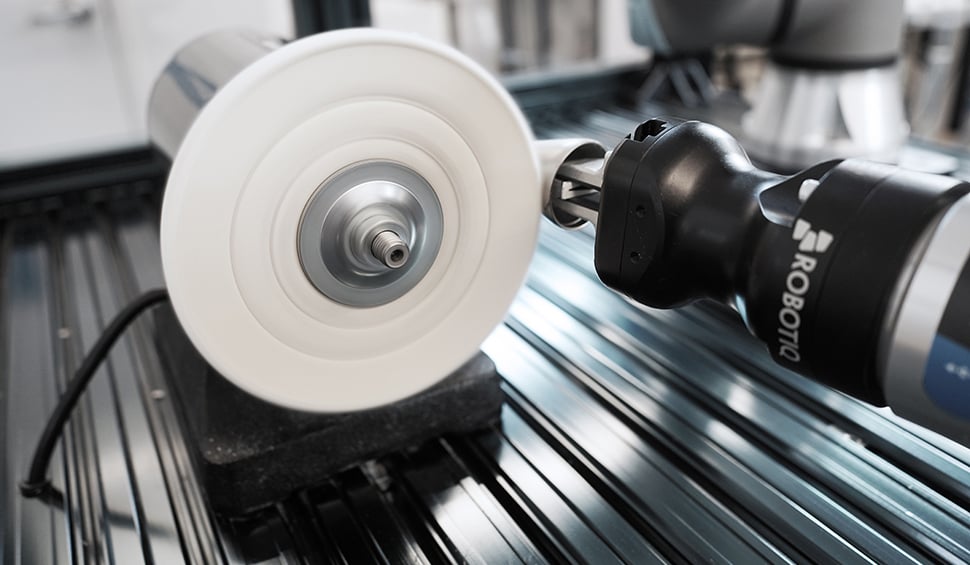
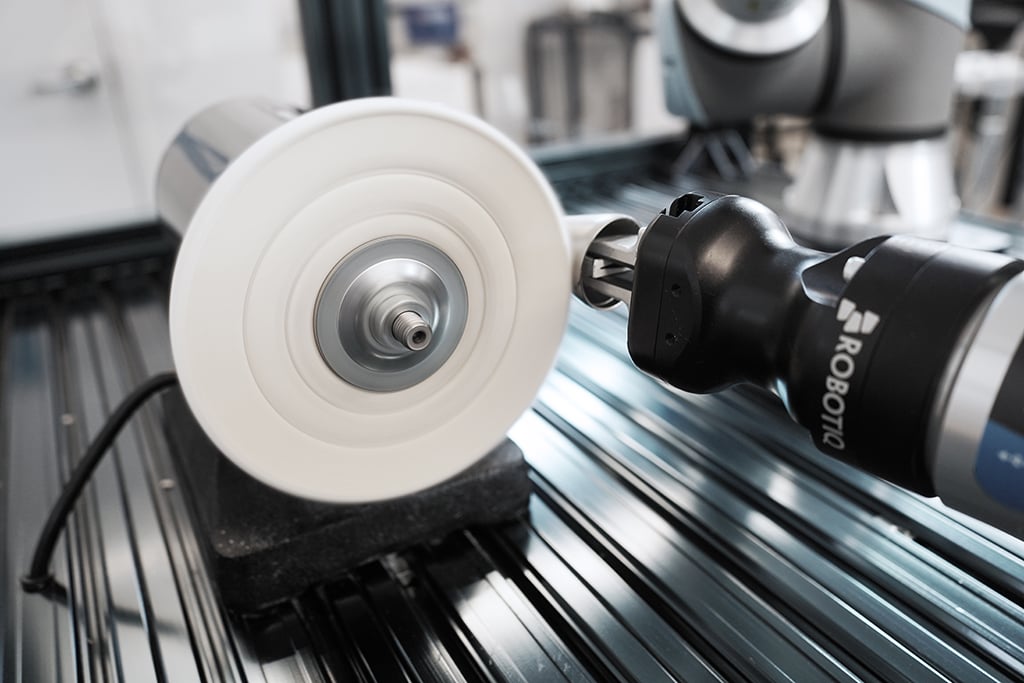

Leave a comment